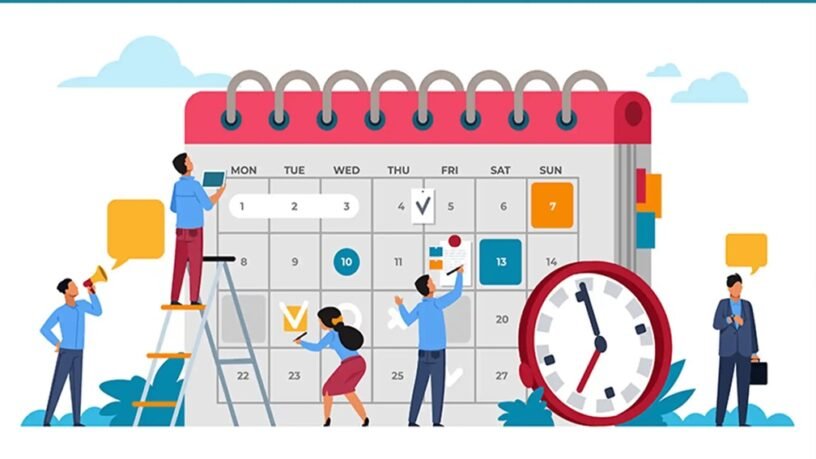Table of Contents
Introduction – Time Management Strategies
Hey techies! If there’s one thing we all wish we had more of, it’s time. Managing time effectively is crucial, especially in the fast-paced IT industry. With the right techniques, you can boost your productivity, reduce stress, and still have time for personal pursuits. Let’s explore some practical time management strategies and how they can make a difference.
1. Prioritization Methods
Eisenhower Matrix
The Eisenhower Matrix is a fantastic tool for prioritizing tasks. It helps you decide what needs immediate attention and what can wait. For instance, when I was working on a project, I used the matrix to prioritize tasks like fixing critical bugs (urgent and important) over less urgent tasks like attending optional webinars.
Real-Life Example: Sabah, a project manager at a software company, often found herself overwhelmed with a myriad of tasks. By implementing the Eisenhower Matrix, she could clearly identify urgent client issues versus non-urgent internal training sessions. This allowed her to allocate her time effectively, resulting in a smoother project flow and happier clients.
ABCDE Method
The ABCDE method is another great way to prioritize. It assigns a priority level to each task:
- A: Must-do tasks with serious consequences if not done. For example, meeting a project deadline.
- B: Should-do tasks with minor consequences, like routine maintenance.
- C: Nice-to-do tasks with no immediate consequences, such as exploring new tech trends.
- D: Tasks to delegate, like administrative work.
- E: Tasks to eliminate, such as unnecessary meetings.
This method helps you focus on what truly matters.
Real-Life Example: Jayaram, an IT consultant, used the ABCDE method to manage his workload. He categorized a critical system upgrade as an “A” task, routine system checks as “B,” reading tech blogs as “C,” delegating report generation to his assistant as “D,” and cut down on attending non-essential meetings marked as “E.” This prioritization improved his efficiency and reduced stress.
2. Time Blocking
Time blocking involves scheduling specific blocks of time for different activities. By dedicating fixed time periods to tasks, you can focus better and ensure all important activities are addressed. For example, I block out 9 AM to 11 AM for coding without interruptions, then use the next hour for emails and meetings. This structured approach ensures I tackle my most important tasks first.
Real-Life Example: Lakshmi, a software developer, used time blocking to manage her day. She reserved the first two hours of her day for deep coding work, the next hour for team meetings, and the afternoon for code reviews and debugging. This approach minimized context switching and boosted her productivity.
3. Pomodoro Technique
The Pomodoro Technique involves working for a set period (usually 25 minutes) followed by a short break (5 minutes). After four cycles, take a longer break (15-30 minutes). This technique helps maintain focus and prevent burnout. My colleague Jake, a software tester, swears by this method. He finds that breaking his work into chunks keeps him motivated and fresh throughout the day.
Real-Life Example: Dravid, a network engineer, struggled with maintaining focus during long troubleshooting sessions. By applying the Pomodoro Technique, he found that working in 25-minute bursts with short breaks helped him stay sharp and reduce fatigue. This method improved his problem-solving efficiency.
4. Task Batching
Grouping similar tasks together and tackling them in one go is known as task batching. For instance, handle all your emails at once, then move on to coding or meetings. This reduces the mental load of switching between different types of tasks. I batch my administrative tasks on Friday afternoons, so the rest of the week is free for more focused work.
Real-Life Example: Lavanya, a cybersecurity analyst, batched her threat analysis and reporting tasks. She dedicated her mornings to in-depth threat analysis and reserved afternoons for writing reports and documentation. This batching technique streamlined her workflow and improved the quality of her analysis.
5. Use of Productivity Tools
Leveraging productivity tools and apps can significantly enhance your time management. Tools like Trello, Asana, and Todoist help organize tasks and track progress. Time-tracking apps like Toggl provide insights into how you spend your time. I started using Asana to manage my projects, and it’s been a game-changer. It helps me keep track of deadlines and prioritize tasks effectively.
Real-Life Example: Majnu, an IT project coordinator, implemented Asana to manage his team’s tasks and deadlines. This tool provided a clear visual of project timelines, helped track progress, and ensured that all team members were on the same page. As a result, project delivery times improved, and team collaboration was more effective.
6. Set SMART Goals
Setting Specific, Measurable, Achievable, Relevant, and Time-bound (SMART) goals provides direction and helps you focus on what’s most important. For example, instead of a vague goal like “learn new programming skills,” set a SMART goal: “Complete an advanced Python course by the end of the month.” This clear, focused approach makes achieving goals more manageable.
Real-Life Example: Padma, a database administrator, set a SMART goal to “Optimize the company database performance by 20% within three months by implementing indexing and query optimization techniques.” This goal was specific, measurable, achievable, relevant, and time-bound, providing her with a clear roadmap and motivation to achieve it.
7. Limit Distractions
Identifying and minimizing distractions is crucial. Turn off non-essential notifications, create a clutter-free workspace, and establish boundaries with colleagues and family members during work hours. My friend Anna, a database administrator, uses noise-canceling headphones and a do-not-disturb sign when she’s in deep work mode. This helps her maintain focus and productivity.
Real-Life Example: Mayank, a web developer, faced constant interruptions from notifications and office chatter. By turning off non-essential notifications, using noise-canceling headphones, and setting clear work boundaries, he significantly improved his concentration and output.
8. Reflect and Adjust
Regularly reviewing your time management practices and adjusting as needed is essential. Reflect on what techniques work best for you and make changes to improve efficiency and balance. I do a weekly review on Sunday evenings, assessing what worked well and what didn’t. This helps me start the new week with a clear plan and improved strategies.
Real-Life Example: Janaki, a network administrator, conducted weekly reviews of her time management strategies. By reflecting on her successes and challenges each week, she identified areas for improvement and adjusted her approach. This ongoing reflection led to continuous enhancements in her productivity and work-life balance.
Conclusion – Time Management Strategies
Effective time management is key to succeeding in the fast-paced IT industry. By prioritizing tasks, using techniques like time blocking and the Pomodoro Technique, batching tasks, leveraging productivity tools, setting SMART goals, and limiting distractions, you can enhance your productivity and maintain a healthy work-life balance. Remember, time management is a continuous process of learning and adapting. Try out these Time Management Strategies, see what works best for you, and keep refining your approach. You’ve got this!




Leave a Reply